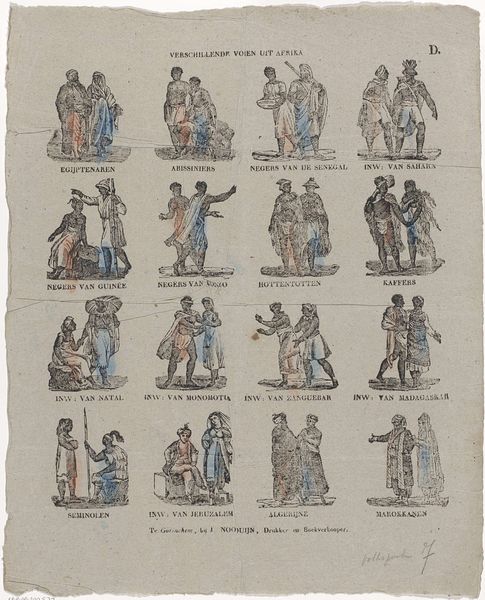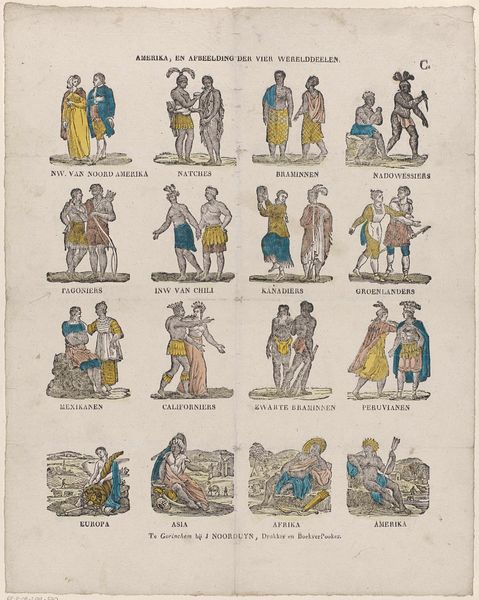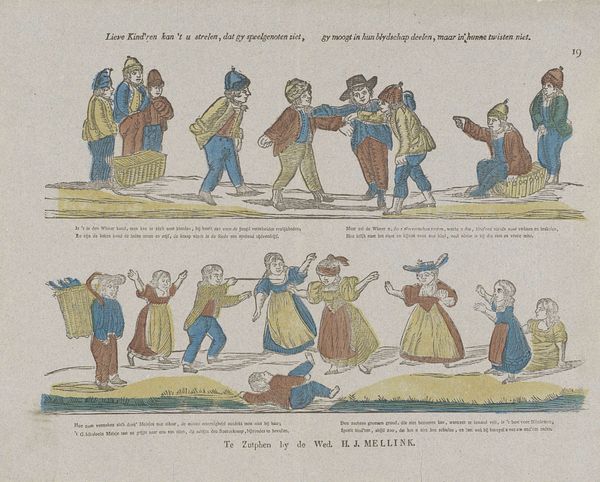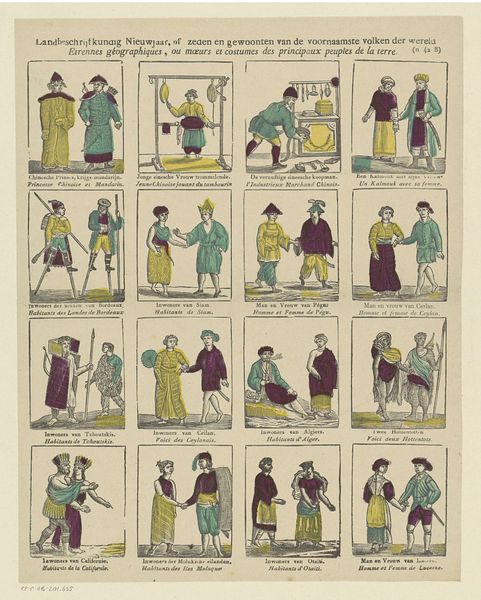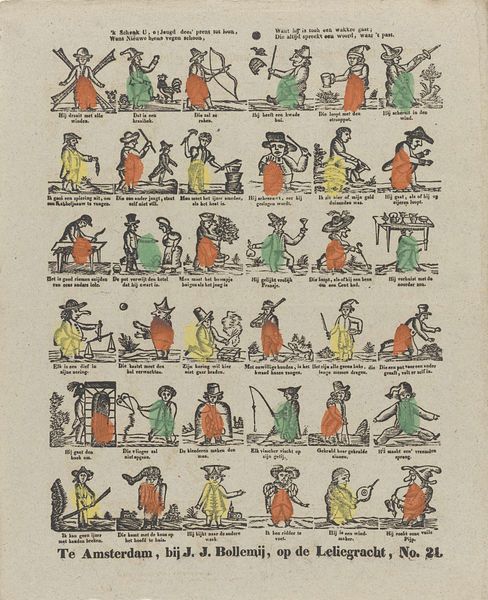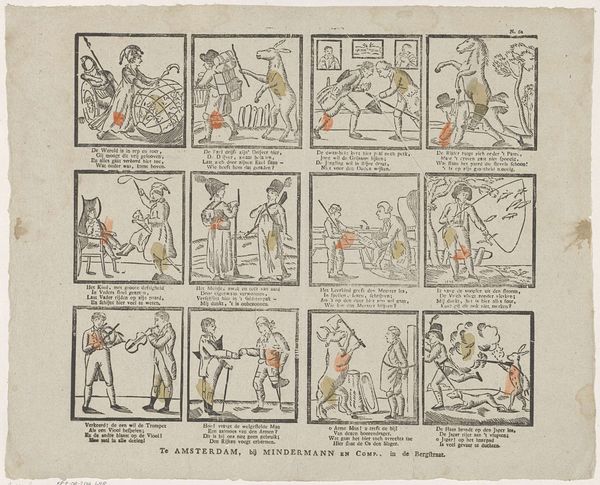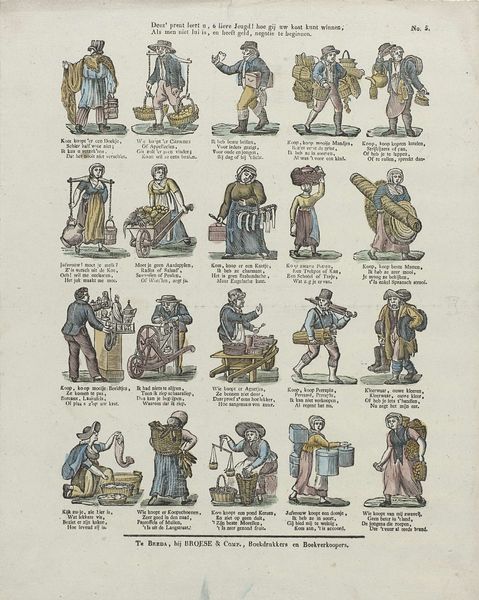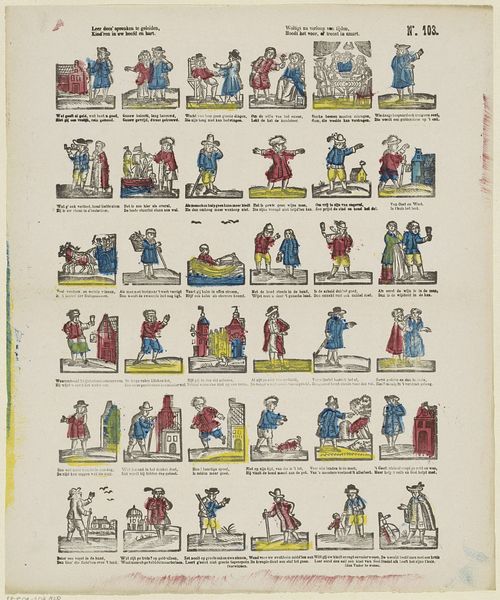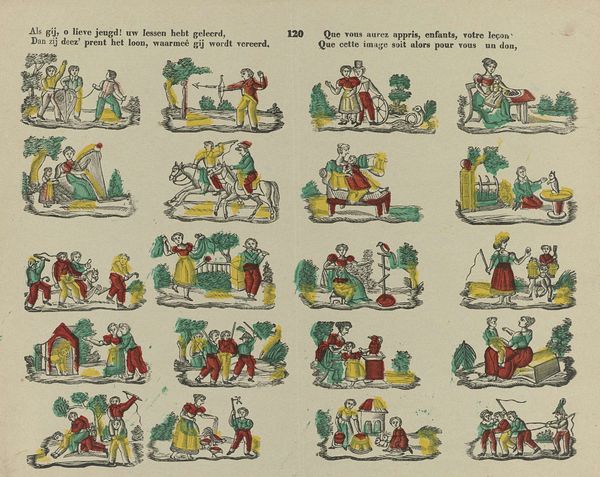
Wil / kinderen u met deze snaken / en met hun zang en spel vermaken 1806 - 1858
0:00
0:00
aquatint, drawing, print, etching, engraving
#
aquatint
#
drawing
#
comic strip sketch
#
quirky sketch
# print
#
etching
#
sketch book
#
personal sketchbook
#
idea generation sketch
#
sketchwork
#
romanticism
#
comic
#
pen work
#
sketchbook drawing
#
genre-painting
#
storyboard and sketchbook work
#
sketchbook art
#
engraving
Dimensions: height 335 mm, width 411 mm
Copyright: Rijks Museum: Open Domain
Curator: This whimsical print is titled "Wil / kinderen u met deze snaken / en met hun zang en spel vermaken," translating roughly to “Will children entertain you with these rogues and their song and play”. It’s by Willem Carl Wansleven, created sometime between 1806 and 1858. It appears to be a print, probably combining etching and aquatint. Editor: My immediate impression is one of carnival, or a very strange procession. The figures remind me of characters from a children’s story or folk tale, there’s a sense of slightly unsettling fun. The lines are crisp, and the limited color palette—mostly muted reds and yellows— gives it an antique feel. Curator: Exactly! Wansleven seems to draw on traditional animal fables and comic archetypes. Notice the use of animals dressed as humans, a common motif in satire and social commentary, and those three stanzas of text underneath the panels. Each row presents a different tableau with distinct figures enacting little scenes that reflect common wisdom, but with a playful twist. The clothing and objects are all period-specific, suggesting a contemporary critique. Editor: I'm drawn to the materiality itself; the artist had to be skilled in draftsmanship to create such detail. I also can’t help but wonder about the function of such a print. Was this meant to be widely circulated, or perhaps a personal work within a sketch book that only came into its current print medium much later? I suppose that relates to how it ended up in our collection as well. How does one move this sort of relatively mundane object through time? Curator: That's a good question. It speaks to the print's potential for multiple interpretations over time. These anthropomorphic figures would resonate with anyone familiar with the existing cultural iconography. Today, perhaps we appreciate the visual punning and light social commentary of its Romantic era themes more than we parse through the work's encoded meanings. Editor: For me, this is interesting as an early example of graphic narrative that used satire in order to explore moral and social issues in comic form. It shows us that concerns of contemporary art practice, using image, story, and a focus on social engagement aren't so novel. Curator: Indeed, and Wansleven invites us to think about the narratives embedded within these seemingly simple visual sketches. Editor: Agreed. It’s intriguing to think of the life cycle of the artist's method, their tools, labor, cultural referents, how their ideas became an object—all captured within the etching and printing processes and materials that made this object, along with all its many layers, available to us today.
Comments
No comments
Be the first to comment and join the conversation on the ultimate creative platform.
